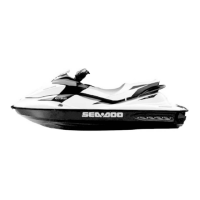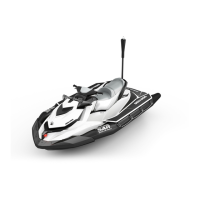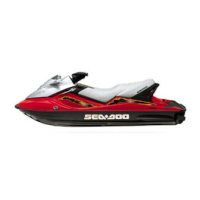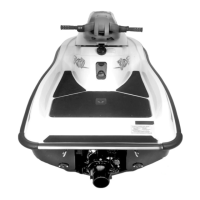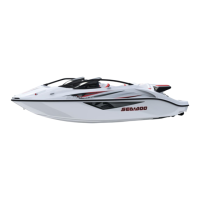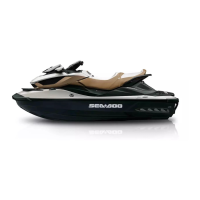PRACTICE EXERCISES
It is always a good idea to practice and
get familiar with all controls, functions
and handling characteristics of your
watercraft before venturing on the wa-
ter.
Always secure the tether cord to the
engine cut-off switch and the clip to
yourPFDorawriststrap.
Where to Practice
Exercises
Find a suitable area to practice the ex-
ercises. Ensure the area meet the fol-
lowing requirements:
– No traffic
– No obstacles
– No swimmers
– No current
– Ample space to maneuver
– Water depth is adequate.
Practice Exercises
Practice alone thefollowingexercises.
Turning
Practice turning in circles in both di-
rections at slow speed. When com-
fortable with the exercise, increase
difficulty by making some figure 8.
When this is mastered, repeat the
above exercises but at increased
speed.
Stopping Distances
Practice stopping the watercraft in
a straight line at various speeds and
braking force.
NOTE: The watercraft speed, load,
water current and wind affect stopping
distances.
Reverse
Practice reverse operation to learn
how the watercraft operates in reverse
andreactswithsteeringinputs.
NOTE: Always perform this exercise
at slow speeds.
Avoiding an Obstacle
Practice to avoid an obstacle (choose a
virtual point on the water) by steering
watercraft and maintaining throttle.
Repeat exercise, but this time release
throttle while turning.
NOTE: With this exercise, you will
learn that you need throttle to steer the
watercraft in a different direction.
Docking
Practice docking using the throttle, iBR
lever and steering to become familiar
with the response of the PWC and to
develop good control skills.
NOTE: Remember that steering direc-
tion is reversed when backing.
Slow Speed Mode, Ski Mode and
Cruise Mode
If your watercraft has any of these
modes, it is also important to under-
stand their operation and to become
familiar with these features prior to us-
ing them on a ride with other people.
WARNING
The ski and the cruise modes are
not an automatic pilot; they will
not drive the watercraft for you.
Important Factors Not to
Neglect
In addition, always remember that the
following conditions have a direct im-
pact on how your watercraft will be-
have and respond to different inputs:
– Loads
– Currents
–Wind
– Water conditions.
Make sure to be alert to these condi-
tions, and adapt accordingly. If pos-
sible, practice further in these con
di-
tions.
24
_______
SAFETY I
NFORMATION
________
